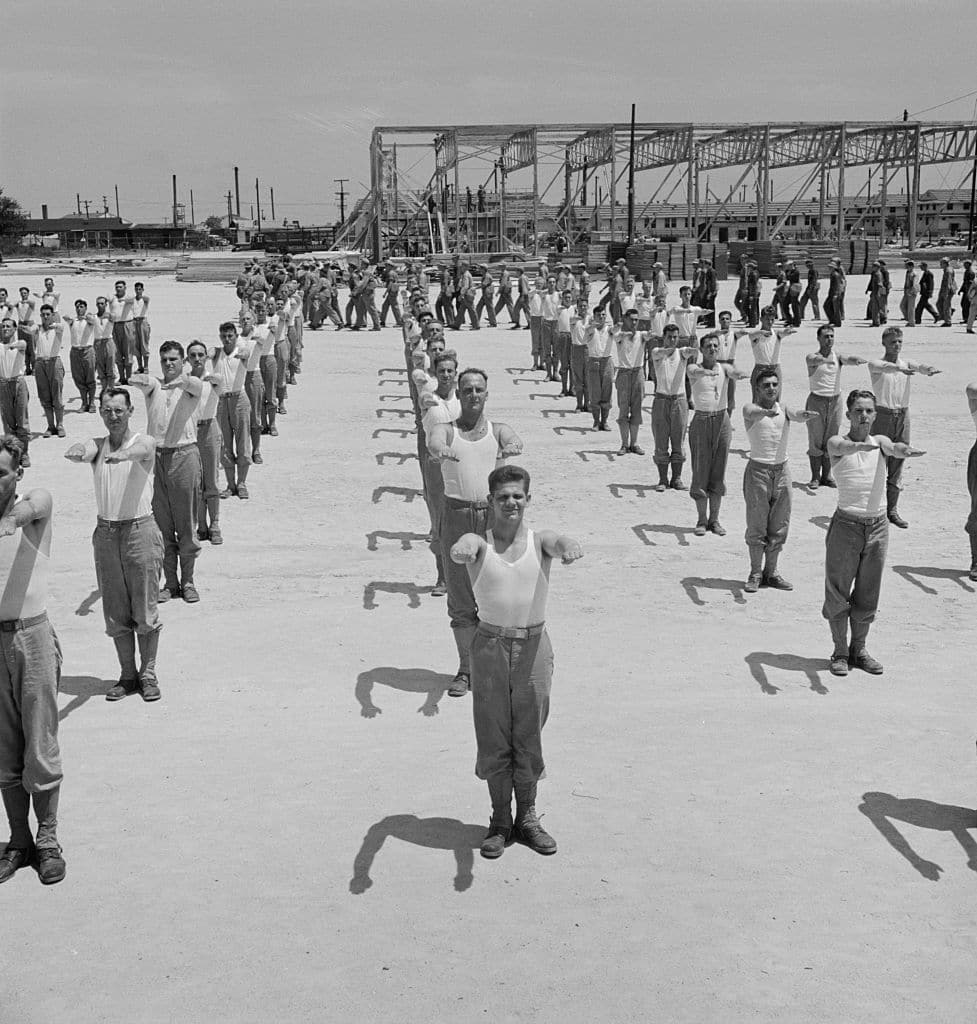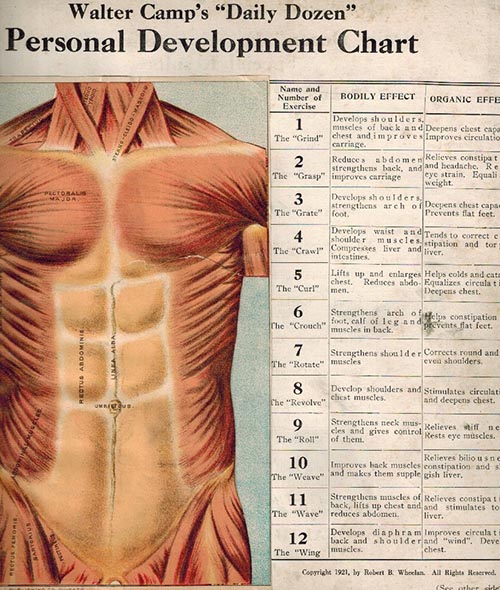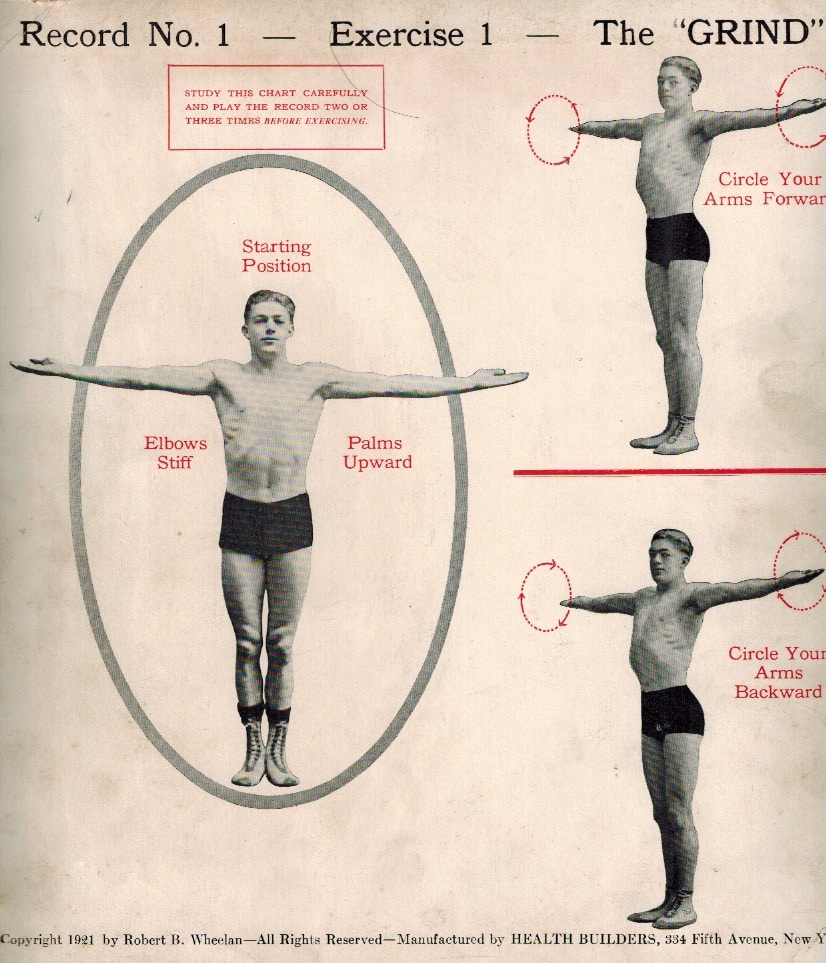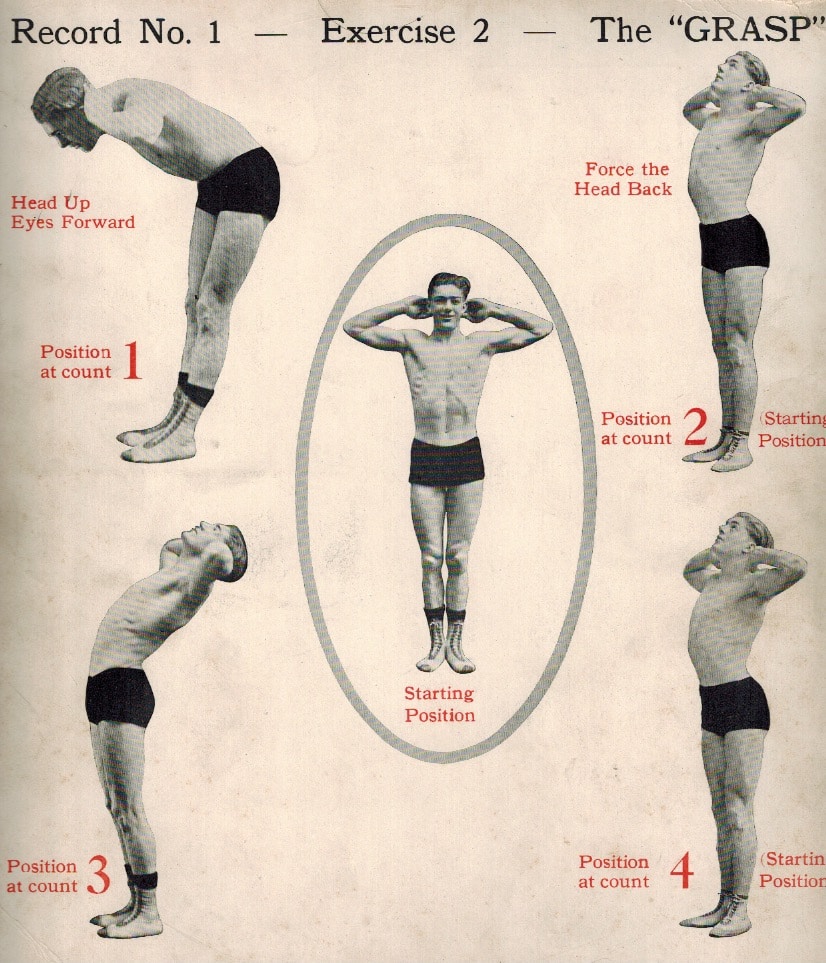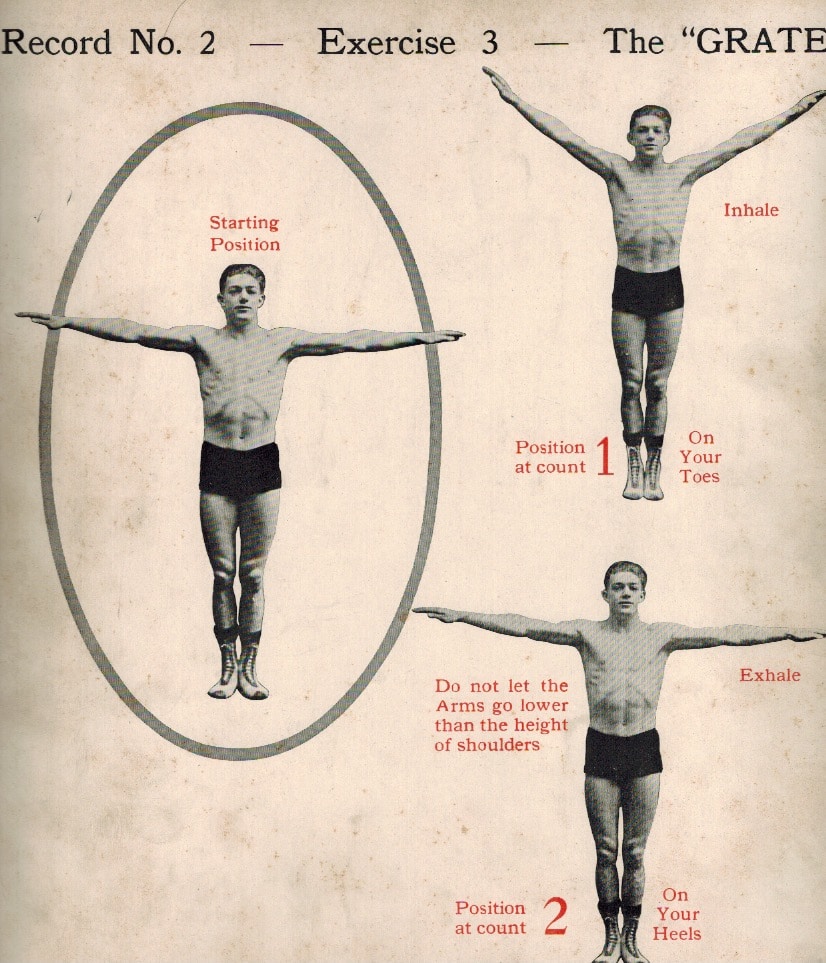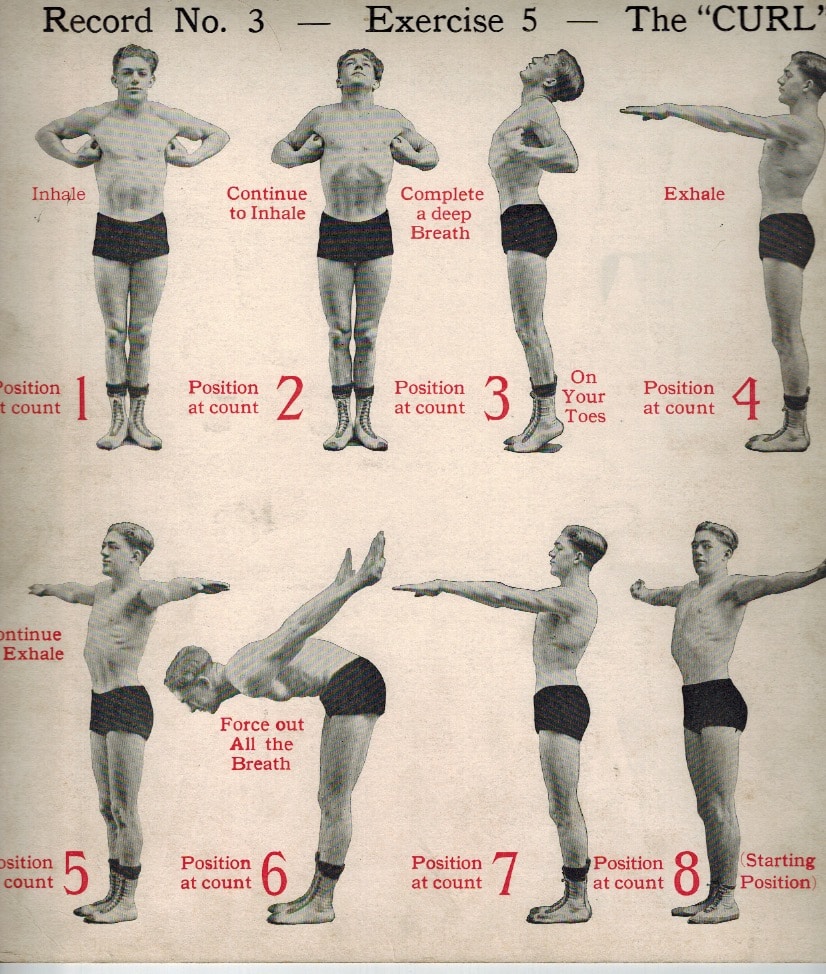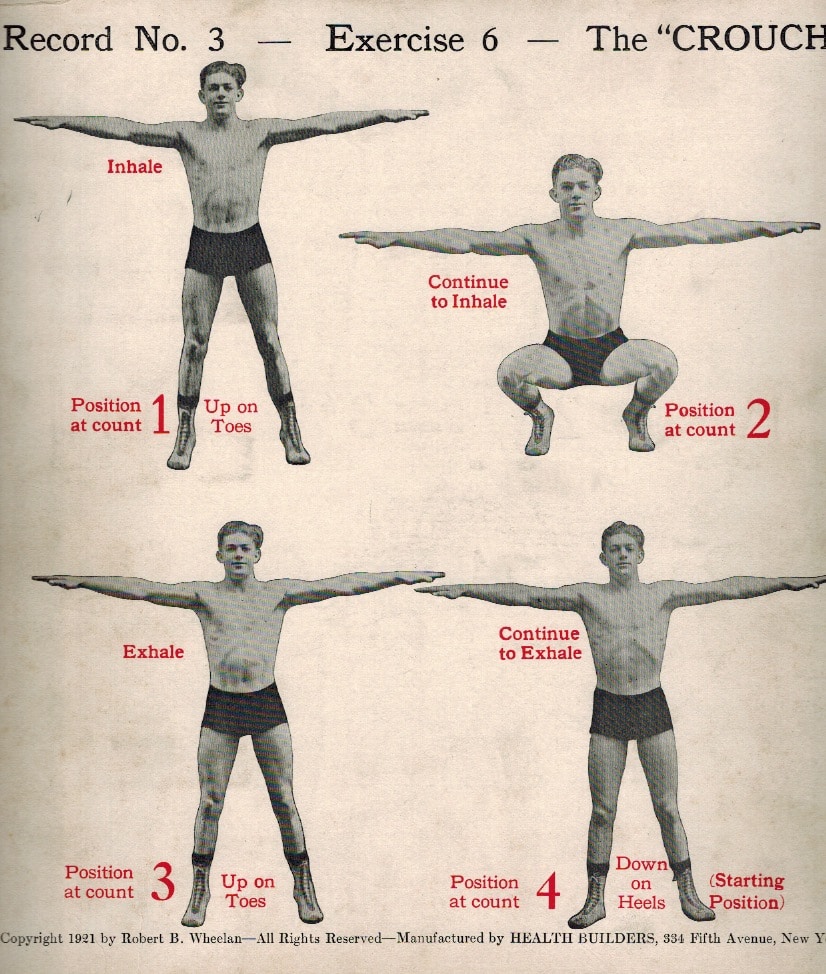In the 1920s and 30s, “Daily Dozen” was a household phrase. Some have even heard of it still today, although they may not know its provenance.
The “Daily Dozen” referred to a set of twelve calisthenic exercises that were performed, well, daily, in an attempt to stay healthy and fit.
The famous exercise routine was created by Walter Camp, a former college athlete, successful businessman, and prolific writer of books and articles on sports and the outdoors. As a student at Yale, Camp rowed, boxed, played tennis, and frequented the school’s gymnasium in his spare time. He also ran track for the university and was a varsity baseball and football player. It was that latter sport that constituted his most enduring and ultimately influential interest. First as a player, and then as a coach, Camp introduced so many innovations to the gridiron — including the line of scrimmage and the system of downs — that he became known as the “Father of American Football.”
During WWI, Camp’s athletic know-how was marshaled by the U.S. military, which made him an advisor on physical fitness. Concerned that the old style of calisthenics then employed by the troops was not sufficiently effective in getting them in fighting shape, the brass asked Camp to create a new program of exercise. His answer was the “Daily Dozen” — a short routine of physical movements designed to keep the country’s sailors and soldiers healthy and nimble, without inducing excessive fatigue.
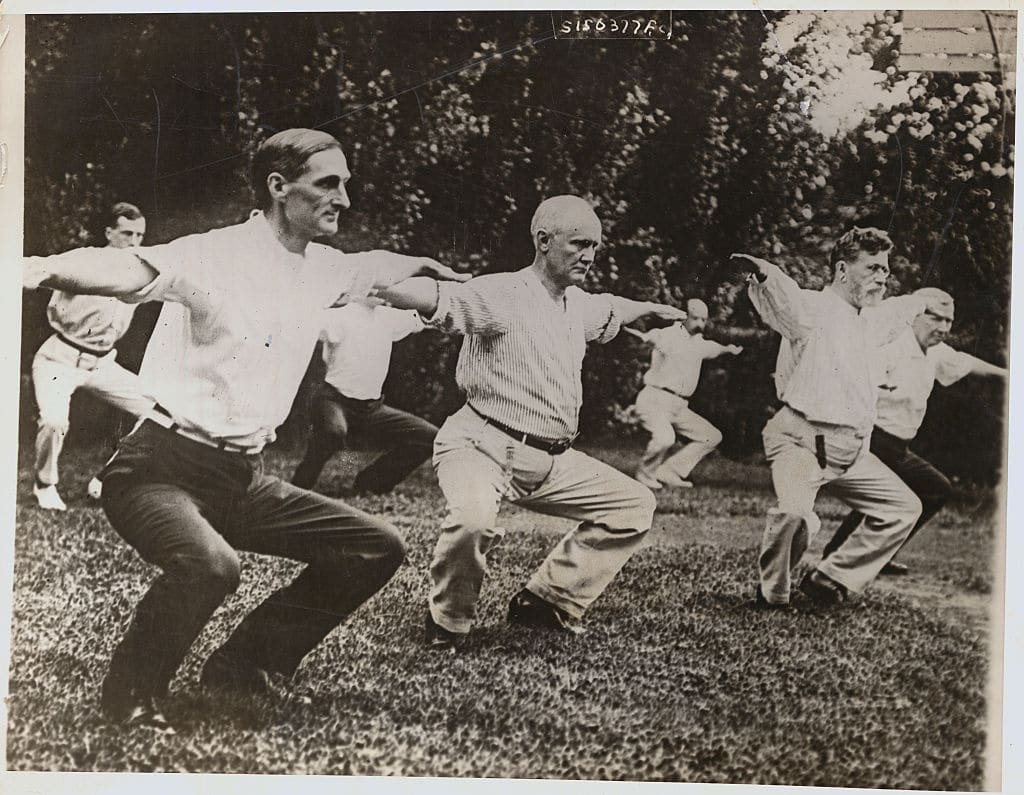
Walter Camp not only taught his “setting up” routine to the men of the Navy and Army, but also to President Wilson’s cabinet, who had lost their pep and pizzazz under the grind of wartime work. Left to right: Secretary of the Treasury William G. McAdoo; Attorney General Thomas W. Gregory; Mr. Louis Post, Assistant Secretary of Labor; and Secretary of Labor, William B. Wilson.
After the war, the Daily Dozen spread by word of mouth and caught on with top-tier businessmen and CEOs — executives who spent a lot of time sitting behind a desk, and wanted to restore some of their old vim and vigor. Camp was asked to write some magazine articles on his regimen, and these became so popular that he then produced a pamphlet on the program which sold close to half a million copies. This smash success was followed by the creation of a bestselling set of phonograph records, which offered audio instruction in doing the Daily Dozen, and finally a full book on the subject. Companies, banks, societies, and clubs all across the nation invited Camp to demonstrate the routine for their executives, employees, and members. The Daily Dozen became not just a national, but an international craze, with people around the world trying Camp’s exercise routine for themselves.
If you’d like to attempt it yourself, put on your old-time strongman singlet, cook up some steak and eggs, and read on. (No phonograph player required.)
What Is the Daily Dozen?
The Daily Dozen that Walter Camp taught the U.S. military, and then the entire nation, consisted of exercises he had created and practiced himself over six decades of life. The movements were born both of a dissatisfaction with existing forms of calisthenics — which Camp thought were too rigid, hard, and boring — and from a concern that we’re very familiar with today: that the creation of modern technologies and conveniences were robbing people of the “primal” health and agility once known to their wild ancestors. Camp’s philosophy on fitness didn’t sound too different than that espoused by present day groups like MovNat, lamenting as he did that modern citizens “are caged creatures, even though we do not see the bars that imprison us” and devising the Daily Dozen as “a substitute for the normal activities of mankind in the primitive state.”
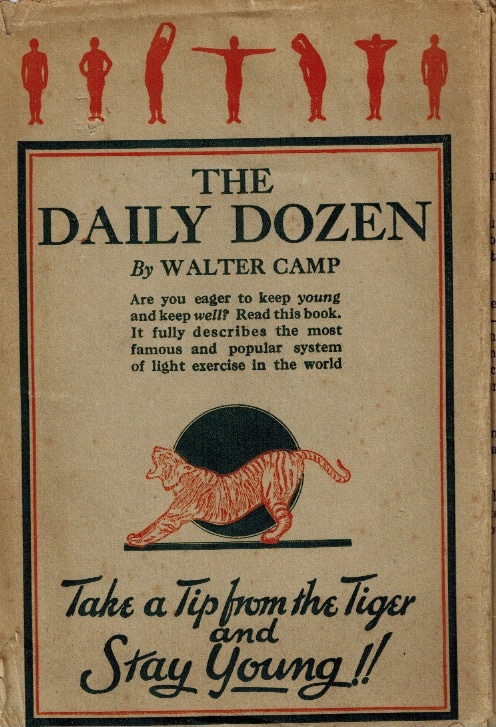
Camp observed how much animals stretched their bodies, and instructed humans to do likewise. It’s funny how much history repeats itself.
The Daily Dozen wasn’t supposed to be a difficult workout, but was rather to be “done lightly and naturally, more in the spirit of recreation and pleasure than with lips compressed, lungs heaving, and muscles tightly flexed.” It was “not meant to be exhausting but refreshing.” Rather than aiming to build a large, ripped physique, the program was designed to exercise “the unseen and usually unremembered muscles” — to impart “greater suppleness” to the body, enhance posture, and increase “your resistance to fatigue, your grace and muscular coordination and poise.” Basically, the Daily Dozen kept you nice and limber. Camp also touted the routine as being a great help for constipation. And its light exercise was not only meant to benefit the physical body, but also the mind’s capacity for “brain work.”
The Daily Dozen was of especial use to those approaching midlife, who noticed an encroaching stiffness and who sat a good portion of the day, but was deemed healthifying for folks of all ages.
Camp touted his Daily Dozen system as “the simplest, shortest, least exhausting and most exhilarating form of calisthenics, or set-up exercises, that can be devised to meet the present conditions of life and civilization. All superfluous movements are thrown into the discard, combinations are effected in order to save time.” Part of its appeal was that it could be done without any equipment, in an area no larger than a bedroom, and completed in only 7 to 8 minutes.
Though the routine itself was neither particularly strenuous, nor time-consuming, Camp recommended being very consistent about its implementation. The Daily Dozen was to be performed seven days a week, at least once, and optimally 3 times (morning, mid-day, and evening), a day — depending on one’s condition, age, and needs. He also recommended supplementing the routine with 10 hours of outdoor “play” to maintain one’s overall health and vitality. Camp felt the Daily Dozen’s rejuvenating, rhythmic movements were quite enjoyable to go through, making this requirement of regularity easy to stick with.
How to Do the Daily Dozen Exercises
Below you’ll find illustrations and instructions on how to perform the Daily Dozen exercises. The whole routine should take you less than 10 minutes, and leave you with plenty of pep and pizzazz, vim and vigor.
Honestly, it’s quite relaxing and limbering.
Note: The illustrations say “Record” because they were taken from a phonograph set of the system. The sides are a little cut off because the boards were too big for my scanner, but you should still be readily able to follow the instructions.
Exercise #1: The GRIND
Turn the palms of the hands squarely upwards and keep the head well up and the shoulders back. Make the motion almost entirely from the shoulders; feel that you are lifting, as it were, and lift slowly so that the effort is felt in the muscles back of the shoulder.
Make six-inch circles with hands, five times forward, five times backward.
Exercise #2: The GRASP
Pay particular attention to keeping the head up as the body goes forward. Keep the eyes fixed on a point directly in front of them when you are erect and do not let the eyes wander from that point while you are going down and coming up. Exhale while the body is going forward and inhale as it rises. In going backward the movement should be very slight, just enough to secure a slight pull on the abdominal muscles, but not to put any strain on them.
Repeat ten times.
Exercise #3: The GRATE
The arms should be lifted from the shoulders with the backs of the hands upwards and elevated at an angle of exactly 45 degrees. When the arms come down they should never sink below the horizontal but be kept firmly under control.
Repeat ten times.
Exercise #4: The CRAWL
Raise left arm, and let the right hand crawl slowly down toward the right knee, curving left arm over head. The hand that rests on the thigh should slide down while the other curls over the head. The motion is largely made just above the hips (like the pivot in golf). When the body comes up for the reverse movement, it should be held erect, with the arms extended straight out from the sides. Then reverse the motion previously made.
Repeat ten times.
Exercise #5: The CURL
Head and shoulders should go slightly back as clenched fists are brought in the arm pits. Take a full inhalation as this motion is made and then exhale slightly as the hands are put out straight in front. Continue exhaling as they sweep down past the hips and up behind the body as the body goes forward. When this final position is reached, exhalation is complete and inhalation begins slowly in order to reach its maximum when the body is once more erect and the fists are bought into the arm pits.
Repeat ten times.
Exercise #6: The CROUCH
The body should be kept in an erect position and the balance maintained on the balls of the feet. It is good practice after complete control is acquired to balance, in the lowered position, while moving slightly from side to side. This will still further strengthen the arches of the feet.
Repeat five times.
Exercise #7: The ROTATE
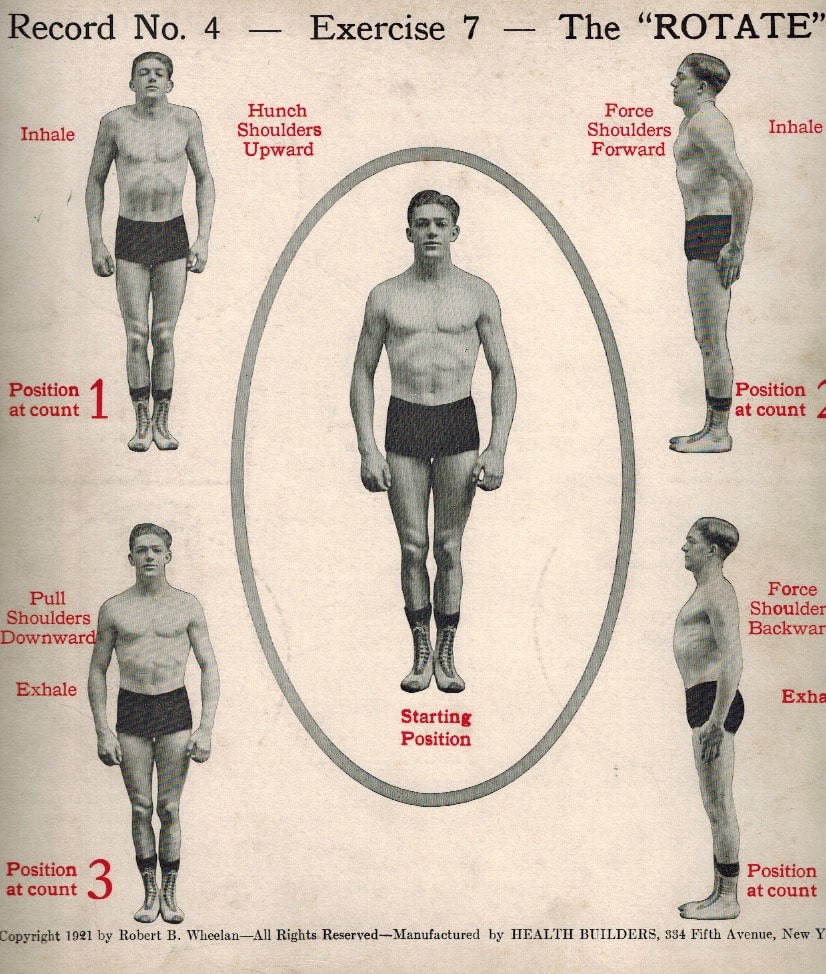
Hunch shoulders upward and forward as you inhale; pull shoulders downward and backward as you exhale.
Repeat ten times.
Exercise #8: The REVOLVE

For the first part of the exercise, cross your arms below the waist, then raise them above the head in a circular motion, with the arms revolving to face outward. Start the circle back down with the arms outward, revolving to face inward again at your waist. For the second half of the exercise, begin with the arms facing inward at your sides; let them revolve outwards as they rise and cross over your head, and then start the circle back down with arms facing inward.
Repeat five times in each direction.
Exercise #9: The ROLL
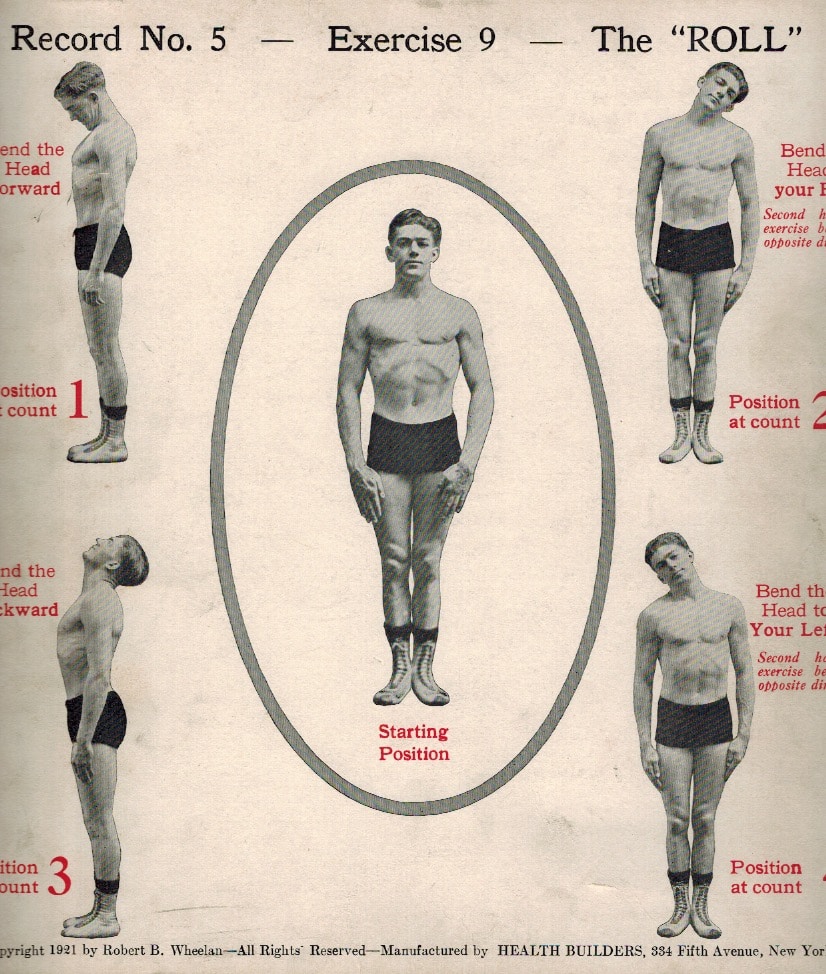
Bend the head forward, then to the right, then backward, and then to the left. For the second half of the exercise, reverse the direction.
Repeat five times in each direction.
Exercise #10: The WEAVE
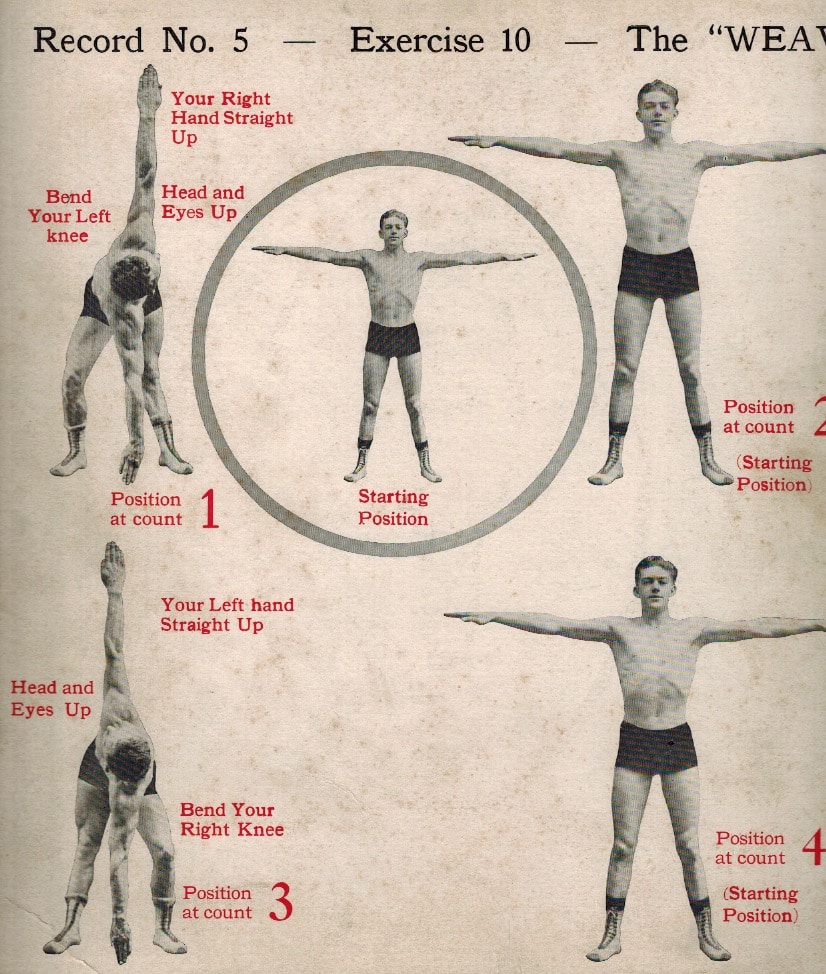
Keep the extended arms in line with the shoulder, turning the body at the waist and letting the forward hand touch midway between the feet. This exercise is particularly rhythmic in character. It is not difficult provided that as the body turns and one hand goes down and the other up, the face is turned each time slightly toward the upward hand.
Repeat five times for each hand.
Exercise #11: The WAVE
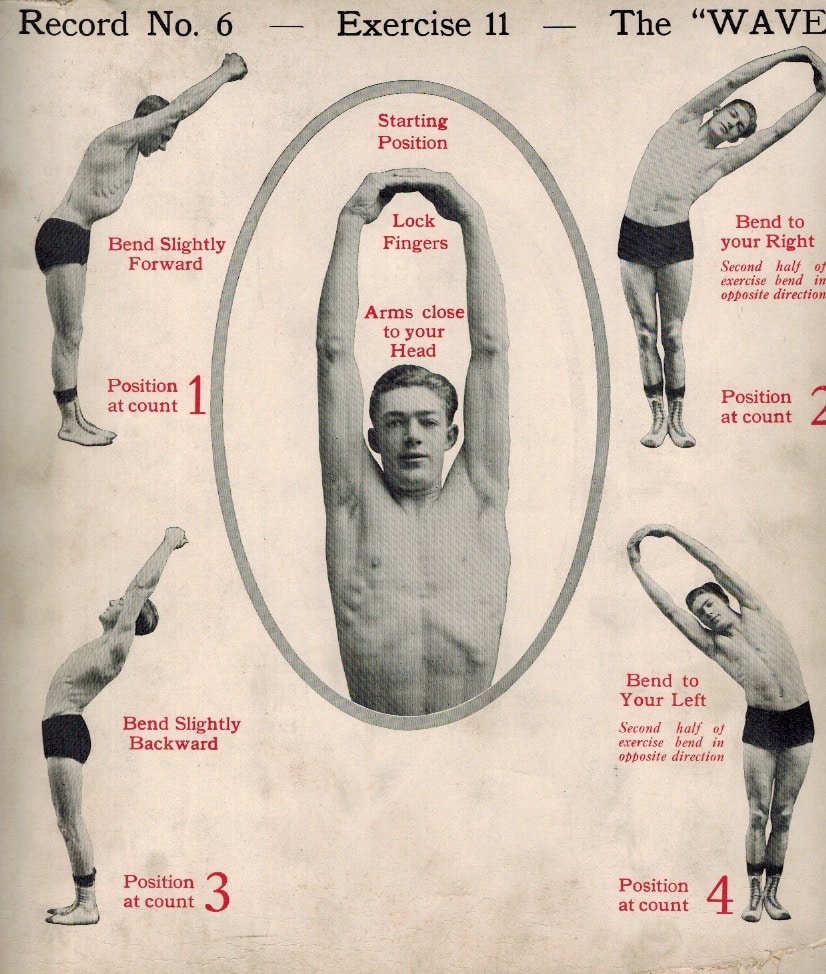
Move only from waist, as you make a circle with your clasped hands. No extreme motions are desirable but simply a steady, rhythmic swing of the body. The more closely the arms are kept to the ears the more effective is this movement.
Repeat five times in each direction.
Exercise #12: The WING
Pay particular attention to getting the breathing rhythmic. Exhale as the body goes down and inhale as it goes up.
Repeat ten times.
Tags: Exercises


